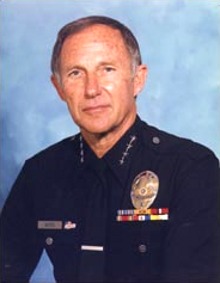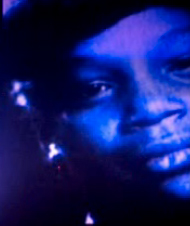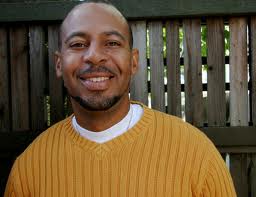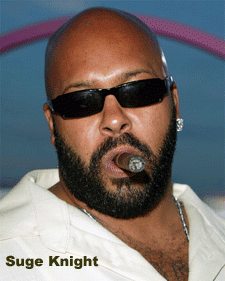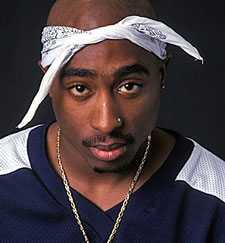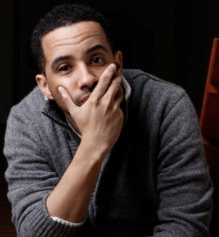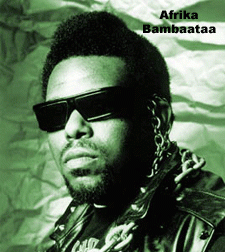It’s time to show the mothafuckin’ news how the streets feel /
Give ‘em a cup of this truth they need a refill…
Damn, that’s the life we live /
If a pig wanna shoot you than your life is his /
I guess the laws don’t know what bein’ righteous is
—By Any Means, Young Gully (2010)
Righteous and ready to burn: 20 years after LA
by Jesse Strauss
 Twenty years ago this weekend, after four cops were acquitted for the widely publicized assault of Rodney King, communities in LA united in anger. In under a week, thousands showed through physical expression of their anger that the Dream of the U.S. was not working. In that time 53 lives were taken and more than 3,000 fires caused about a billion dollars of damage, according to reports. But let’s be clear: two decades after LA went up in flames, the anger still bubbles barely beneath the surface and the US remains in crisis.
Twenty years ago this weekend, after four cops were acquitted for the widely publicized assault of Rodney King, communities in LA united in anger. In under a week, thousands showed through physical expression of their anger that the Dream of the U.S. was not working. In that time 53 lives were taken and more than 3,000 fires caused about a billion dollars of damage, according to reports. But let’s be clear: two decades after LA went up in flames, the anger still bubbles barely beneath the surface and the US remains in crisis.
Every April, I spend time finding accounts and analyses of the 1992 rebellions. For the 20th anniversary, some LA-based news organizations have put together spotlight websiteshighlighting the events of 20 years ago and what has changed since. A few things stand out.
First, there’s a heavy focus on ways the Los Angeles Police Department has improved in the past two decades. There’s a similar focus on how “race relations” have improved.
Fuzzy comfort
As evidence of how LA has “changed over the years”, the LA Times offers a short photo gallery of “then” and “now” images — for example, what a burning building looked like in the midst of rebellion, and what that same space looks like now — without any explanation of what the contrast is meant to represent. Buildings currently standing where others burned may look better now than they did while on fire. But beyond the fuzzy feeling that a modern lack of fire means peace, they’re irrelevant. LA continues to have decrepit buildings and abandoned overgrown lots, some in the same places where buildings burnt down in 1992. A photo series could have the exact same effect if it compared images from burning buildings in the 1965 Watts Rebellion to what those same places looked like on April 28th 1992—the day before another round of rage-fueled fires ignited.
The anniversary coverage in 2012 tries to offer a warm-and-fuzzy comfort, but some of it seems pulled from thin air. This MSNBC article cites a Loyola Marymount University study reporting that “most say LA is unlikely to see a repeat of such riots in the coming years.” Butthe study doesn’t seem to say anything like that. Rather, it is entirely focused on people’s changing perceptions of police since 1997, and actually suggests that people are slightly more dissatisfied with the LAPD overall than they were when the study started.
The implied sense of calm or peace that the photos and bizarre survey reports offer is in a way representative of cultural change in the past 20 years. We haven’t seen uprisings to the scale of the LA rebellions since then, but the righteous anger that fueled those events has not been significantly addressed. Rather, it’s been reinforced.
Let’s be clear: a lot has changed since 1992. Globalization has affected us deeply: We now have a much more intensely consolidated media mechanism; “free trade” policies that encourage migration patterns moving north from Latin America; wars that have been fought and lost in our names for more than a continuous decade – which corresponds to the racial targeting of Middle Eastern, South Asian and Muslim people; and far more access to global communications (internet) than most of us could’ve imagined in ‘92. Racism has changed too, but rather than being at ease, it has adapted. “Free trade” with Mexico comes with legally- and racially-targeted limited freedom of movement for Xicanos/Latinos in the form of the Minute Men, laws like Arizona’s SB1070 and that same state’s elimination of ethnic studies curriculum. 9/11 and a decade of war corresponds to Islamophobia campaigns and religiously (and often racially) targeted violence towards Middle Eastern, South Asian and Muslim. And urban outbursts, kicked off by racially stigmatized events, still happens regularly.
Putting the PIC on blast
The famed video of Rodney King being attacked in the middle of a road by a crew of baton-wielding aggressor cops became the first incidence of “citizen journalism” (or according to media reports back then: “amateur photography”) that, when brought to a mainstream news source, demonstrated to the world what was already known to many in Black and Brown communities about racially-targeted police violence. But that didn’t tip off rebellions, as the video emerged in March of ’91: more than a year before the rebellions.
Neither was the tipping point caused by the emergence of a surveillance video that showed the killing of 13-year-old Latasha Harlins, shot by Sun Ja Du over a fear that Harlins may have been stealing an orange juice bottle from Du’s store (the video was released two weeks after the video of King’s beating). Or even when Du was sentenced to a mere probation term for the killing (which was contrasted on local Channel 4 news at the time with a man being sentenced for 30 days in prison for beating his dog).
What set people off was the complete acquittal, on April 29th, 1992, of all the cops who attacked King.
 Together, the series of events displayed publicly the ways that the “criminal justice system” works on many fronts to enforce and defend racism. Rather than exposing a few bad apples, the events showed ways that racism is embedded in the functioning of the Prison-Industrial-Complex (PIC) , both on the streets and in courtrooms. The events catalyzed an expression of righteous anger about what had been happening under the mainstream radar for a long time: so long, in fact, that there was already a built-in soundtrack for the rebellions. Music that appeared in previous years that became anthems for the rebellion was not a causal factor of burning or looting. Rather, it reflected cultural experiences and attempts to name the realitiesthat had been part of artists’ communities’ everyday experiences.
Together, the series of events displayed publicly the ways that the “criminal justice system” works on many fronts to enforce and defend racism. Rather than exposing a few bad apples, the events showed ways that racism is embedded in the functioning of the Prison-Industrial-Complex (PIC) , both on the streets and in courtrooms. The events catalyzed an expression of righteous anger about what had been happening under the mainstream radar for a long time: so long, in fact, that there was already a built-in soundtrack for the rebellions. Music that appeared in previous years that became anthems for the rebellion was not a causal factor of burning or looting. Rather, it reflected cultural experiences and attempts to name the realitiesthat had been part of artists’ communities’ everyday experiences.
Original media coverage of the events seems to recognize some of those realities, at least superficially. One ABC news report from the time of the unrest says: “Civil rights organizations say the Los Angeles Police Department has a history of brutality and misconduct that goes back a quarter of a century, including one incident that sparked the Watts Riots. So far this year there have been 125 complaints of police misconduct filed with watchdog organizations.” While the expressions of anger in LA were largely reported as “riots” or “looting” in original news material, I don’t see as significant reference to histories and patterns of violence in newer coverage of relatable events.
In fact, a Sky9 news anchor, reporting during the uprising, referenced the local history of the Watts uprising, the present situation, and a warning for the future: “As you said, this has no boundaries. 1965, 1992, and from looking at the scores of children on the streets, you kind of hate to wonder what will happen 20 years from now.” The historicity of this comment seems almost too apt in 2012.
The LA Times’ initial report included a surprising quote from LA Mayor Tom Bradley: “The jury’s verdict will never blind the world to what we saw on the videotape.” Bradley also reportedly called the verdicts “senseless.” While this may not amount to a critique of the PIC as a whole, it offers recognition that the system can produce dysfunctional results.
Seventeen years later, on New Year’s morning of 2009, Oscar Grant, a young Black man and a father, was shot in the back by a cop while lying facedown on a subway platform, all caught on video. Afterward, bureaucratic inaction fostered impunity for the trigger-happy officer, along with his racist co-workers, leaving the people of Oakland to assume that Grant’s case would repeat what many had been seeing in their neighborhoods for a long time: official immunity from the PIC for those who benefit from it. That is, those whose job it is to enforce the PIC (police, ICE agents, judges, etc) as well as communities that are not targeted or extra-heavily policed (which happens in largely working class neighborhoods where mostly people of color live and experience in the forms of profiling and gang injunctions, for example).
The first public comment by Oakland Mayor Ron Dellums on the situation came more than a week after the killing, and after some property in the city’s downtown area had been damaged by people expressing rebellious anger. Unlike the comment from Bradley, Dellums directed his focus in a way that validated the PIC. He said he wanted the official police process “to investigate this homicide the way [they] would investigate any other homicide in the city of Oakland.” With this, Dellums missed the mark. Many in Oakland had experienced that the way official investigations operate leave more Black men in prison and corrupt cops on the streets.
Oakland’s 2009 unrest paled in comparison to LA’s in 1992, doing far less physical damage to the city. But rather than relating Oakland’s deep history of Black struggle to current events, the news slapped loaded labels like “rioter,” “outside agitator,” and “looter” on the people expressing their righteous anger in a disorganized way.
Righteous chaos
Last summer, however, we saw collective expressions of anger more closely rivaling the LA rebellions—this time in the U.K.
At a rally to support “justice” for Mark Duggan, a Black man who had been killed by gun-toting cops in his own neighborhood of Tottenham, London, a few days earlier, police reportedly started a confrontation with a young woman, setting the crowd off from a growing sense that cops hadn’t earned the authority they were demanding. London became engulfed byrighteous chaos.
The news repeated a statement by David Cameron, Britain’s prime minister: The actions were “criminality, pure and simple”, as opposed to any kind of thoughtful anger being expressed. To underline his point, Cameron said in parliament that “gangs were at the heart of the protests and have been behind the coordinated attacks.” Research by the U.K.’s Guardian showed otherwise: Not only were gang members inactive in a coordinated way during the rebellions, but that there was a de facto gang truce during that time—which also happened during LA’s rebellion.
The British government’s neglect of the underlying reasons for righteous anger leaves London unsure of it’s peaceful future. An official report on the London uprising leads to the same conclusion: “Will riots happen again? The answer is quite possibly ‘yes’.” This is because the report authors “noted a collective pessimism about the future. We were shocked by the number of young people we spoke to who had no hopes or dreams for their future.” In other words, London could reach another tipping point any day. Let’s remember that the killing of Mark Duggan wasn’t even recorded.
Globalization and adaptation
London is just as far from LA geographically as it was in 1992, but the two cities’ police systems are less distinct. After the London uprising, the city brought in “gang expert” William Bratton straight from LA. Similarly, the Gulf Kingdom of Bahrain hired John Yates, a British assistant police commissioner, and John Timoney, a former Miami police chief, to help shut down the country’s yearlong unrest. This is not to equate the struggles in LA, London, and Bahrain, but rather to underline that as we begin to develop a global understanding of anger and its various and chaotic expressions, these and other governments recognize the value of practiced stifling of expression.
While righteous anger can be expressed in many ways, state responses to it appear to be growing more homogenized and standardized. The globalization of what we experience in the U.S. as over-policing or even systematic violations of our constitutional rights is becoming a valued trade technique for “experts” in crowd control.
But beyond recognized police misconduct (when cops break their own policies and the law), the expertise being imported to the U.K. and Bahrain is based on a strong handling of the PIC as a problematic and discriminatory system.
Moreover, unless a grassroots people’s movement of some kind gives the media no choice, these killings receive no attention. And this is lesson one: rebellions work. Without convincing videos or some kind of salacious sensationalism, police misconduct gains no public traction. We don’t see public beatings or killings, like those of Rodney King or Oscar Grant, every day, but that’s largely because our media mechanisms don’t care to focus on them.
That’s certainly the case in the Trayvon Martin police operation. After Martin was killed in February by a self-appointed neighborhood watch volunteer, national media couldn’t have cared less. It was a growing show of public anger, albeit very different in appearance from the LA or Oakland rebellions that brought Martin’s death into the spotlight. In his case, it was the same demonstration that the PIC is working just as it was designed, that catalyzed anger. The law supported police to allow an admitted killer to avoid arrest until a nationwide mobilization that included vigilante bounties and hoodie solidarity gave them no other choice.
But we’re still in the early stages of the Martin ordeal. Now that we have a global audience tuned in to killer George Zimmerman’s trial, what will happen if he is acquitted?
Righteous anger – 2012 remix
Twenty years after LA burned, tension stays heated. Police maintain repressive crowd control that is sanctioned by the PIC, but intensely organized policing promotes neither justice nor peace, let alone eases tensions. The experience of anger changes over time and adapts to societal changes, but the persistence of the PIC ensures a significant righteousness. On top of local experiences—as in the government’s handling of Hurricane Katrina, or school districts being shut down and sold to the highest bidders in New Orleans or Philadelphia—the root of righteous anger acted on in LA 20 years ago is being exacerbated nationally.
United for a Fair Economy’s State of the Dream 2012 report shows that already: “Blacks are six times more likely to be in prison than Whites, and people of color make up over 65 percent of the prison population.” The report offers evidence to suggest that in the next 30 years: “If we do not change course, we will continue on a path toward becoming a country in which the overwhelming share of the emerging non-White majority is economically insecure… If the trends in racial economic inequality of the last thirty years continue for the next thirty years, the racial economic divide in 2042 will be vast and devastating for communities of color and the nation as a whole.”
Let’s also not forget that as a remaining underlying construct for the PIC, slavery remains legal “as a punishment for crime” in the very document our entire legal system is based on, the Constitution.
Of course, anger is not the only reaction we could have to these injustices, or to the case of Trayvon Martin, or of any of the 28 Black people killed by “police officials, security guards, and keepers of the peace” in the first three months of 2012. But expressions of righteous anger have not gone away. They will continue to show up in spurts and in different forms – and in potentially dangerous ways, if this is at all indicative. To be clear, I am not excusing the destructiveness, violence and rage that was expressed in LA’s, Oakland’s or London’s rebellions. Rather, this is a call to reposition responsibility for those actions on the legal sanctioning of targeting and killing people from certain communities (1) – that is, on the everyday function of the Prison-Industrial Complex.
An anger-fueled soundtrack continues to smolder twenty years after LA’s fires burnt out. With music as a reflection of socio-cultural experience, rebellious recordings are being produced out of studios and basements, and are easily accessible online. Time keeps our soundtrack moving forward, but it doesn’t erase samples from the past. While raw funk beats bumping on the radio might be replaced by the downloadable synth-heavy soundtrack of 2012, throwback references to NWA and Tupac anchor them in continued righteousness in the context of state-sanctioned injustice. Whatever actions today’s soundtracks accompany, they will reflect realities deeply rooted in local and global power structures—realities far more complex than tidy photographs of restored buildings.
(1) This piece focuses on rebellions sparked by the PIC’s targeting of people of color, and specifically Black men. This focus is intentional, in that the significant uprisings in the past two decades that share characteristics of LA’s ’92 rebellion have been sparked by the killings of Black men. These types of rebellions are characterized by the ejection or exclusion of a class of people from mainstream US culture, which is why it’s relevant to reference the PIC-sanctioned targeting of people who’ve been ejected like indigenous Americans, migrants, Muslims and queer people. In the past 20 years there have not been outright rebellions sparked by the targeting of those communities, but righteous anger from being targeted is easily accessible. But, for example, San Francisco saw the White Night rebellion in 1979 after the PIC handed the lowest possible sentence to Dan White, the killer of the city’s first queer and out elected politician, Harvey Milk, as well as Mayor George Moscone. All three of those men are white, and the uprising was acted on by righteous anger that had swelled in San Francisco’s queer and queer-supporting community.
written by Jesse Strauss






